Association of endothelin-1 and matrix metallopeptidase-9 with metabolic syndrome in middle-aged and older adults
- PMID: 26692905
- PMCID: PMC4676096
- DOI: 10.1186/s13098-015-0108-2
Association of endothelin-1 and matrix metallopeptidase-9 with metabolic syndrome in middle-aged and older adults
Abstract
Background: Metabolic syndrome (MetS) contains a cluster of cardiovascular risk factors. People with MetS are more susceptible to cardiovascular disease, diabetes mellitus, and cancer. Endothelin-1 (ET-1) and matrix metallopeptidase-9 (MMP-9) have been implicated in the development of cardiovascular diseases, diabetes mellitus and cancers. This cross-sectional study aimed to examine the association of ET-1 and MMP-9 with MetS in middle-aged and older Hong Kong Chinese adults.
Methods: 149 adults aged 50 to 92 (n = 75 for non-MetS group and n = 74 for MetS group) were examined. All subjects were screened for MetS according to the diagnostic guideline of the United States National Cholesterol Education Program (NCEP) Expert Panel Adult Treatment Panel (ATP) III criteria. Serum levels of ET-1 and MMP-9 were measured. Independent t test was used to detect differences between non-MetS and MetS groups and between subjects with or without certain metabolic abnormality. The association of the serum concentration of MMP-9 and ET-1 with MetS parameters were examined by Pearson's correlation analysis.
Results: Serum level of ET-1 is higher in MetS-positive subjects and in subjects with high blood pressure, elevated fasting blood glucose, and central obesity. The serum concentration of MMP-9 is higher in subjects positively diagnosed with MetS and subjects with high blood pressure, elevated fasting blood glucose, low blood high-density lipoprotein-cholesterol (HDL-C), high blood triglycerides, and central obesity. Correlation analyses revealed that serum concentration of ET-1 is positively correlated to systolic blood pressure, waist circumference, fasting blood glucose, and age whereas it is negatively correlated to HDL-C. MMP-9 is positively correlated to systolic blood pressure, waist circumference, fasting blood glucose, and age whereas it is negatively correlated to HDL-C.
Conclusion: Serum ET-1 is higher in subjects with hypertension, hyperglycemia, central obesity or MetS. Serum MMP-9 is higher in subjects diagnosed with MetS or having either one of the MetS parameters. Both circulating levels of ET-1 and MMP-9 are correlated to systolic blood pressure, waist circumference, fasting blood glucose, HDL-C, and age. Further research is needed to fully dissect the role of ET-1 and MMP-9 in the development of cancers, diabetes and cardiovascular disease in relation to MetS.
Keywords: Cancer; Cardiovascular disease; Diabetes mellitus; ET-1; MMP-9; Metabolic syndrome.
Figures
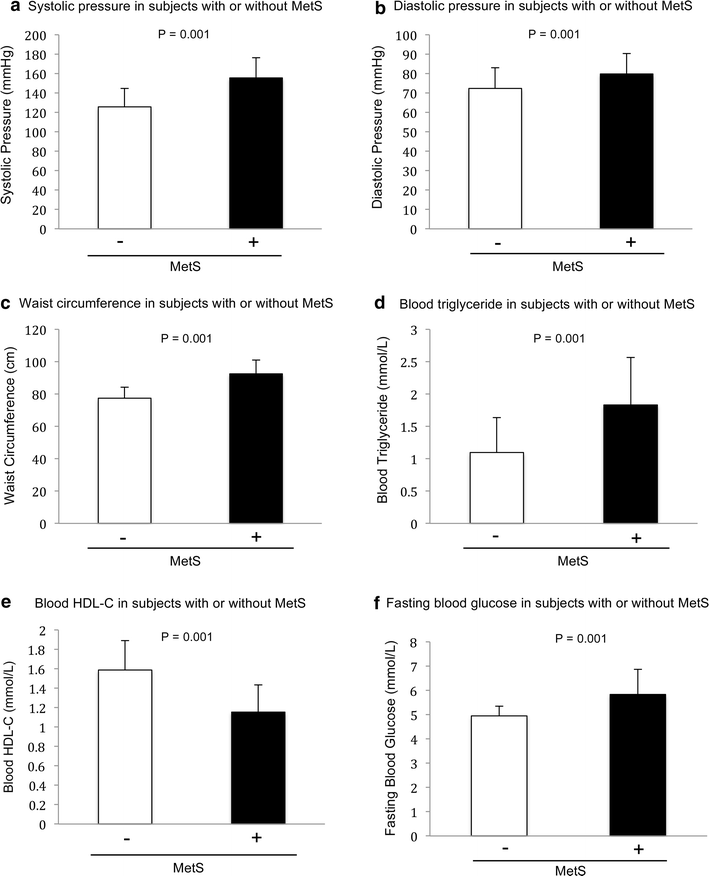
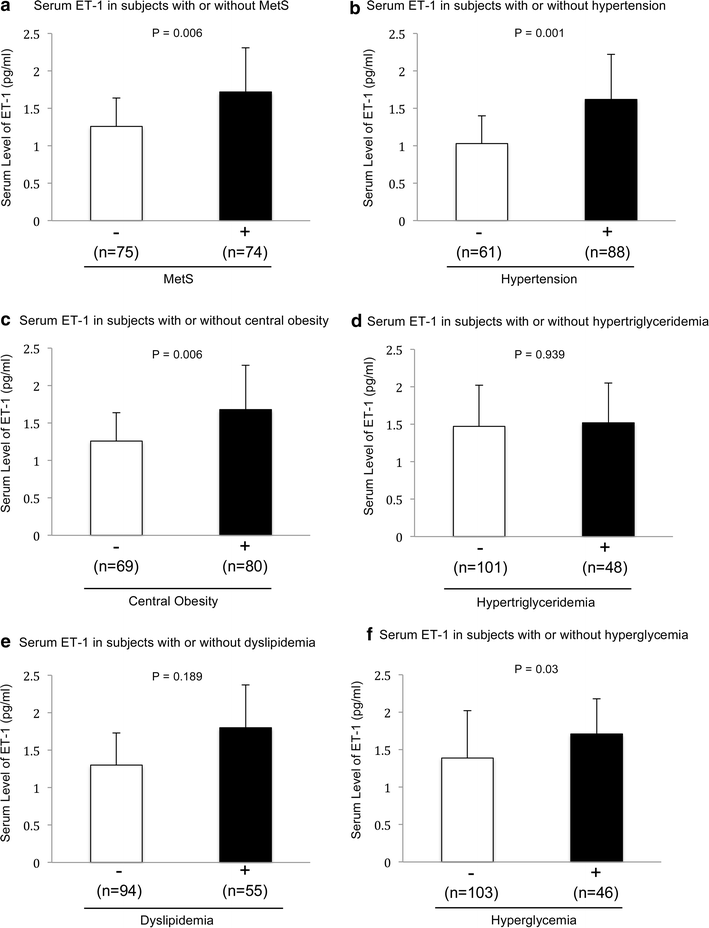
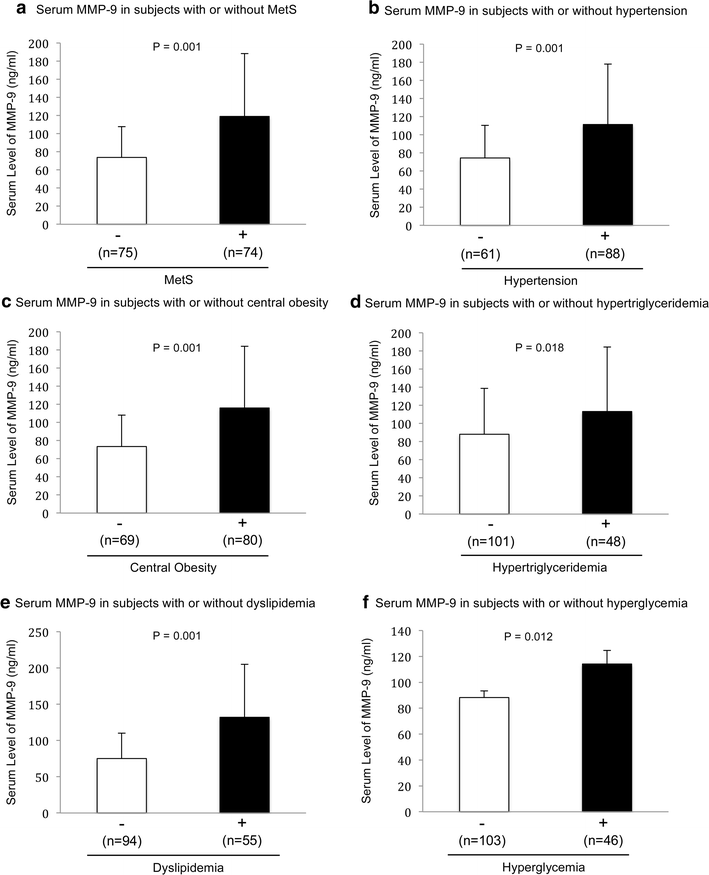
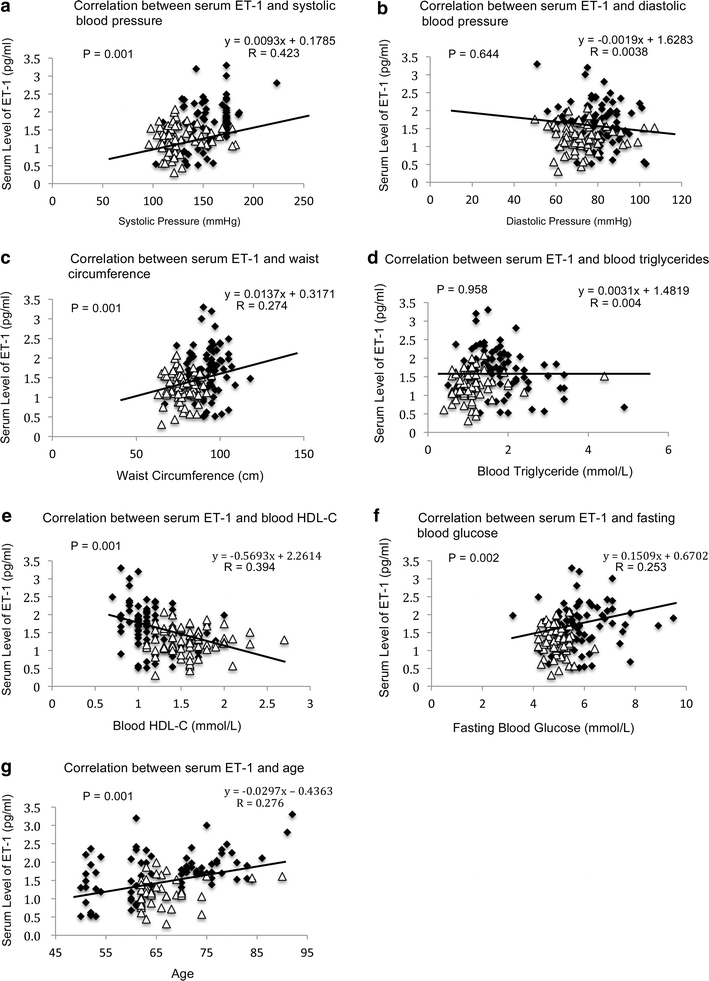
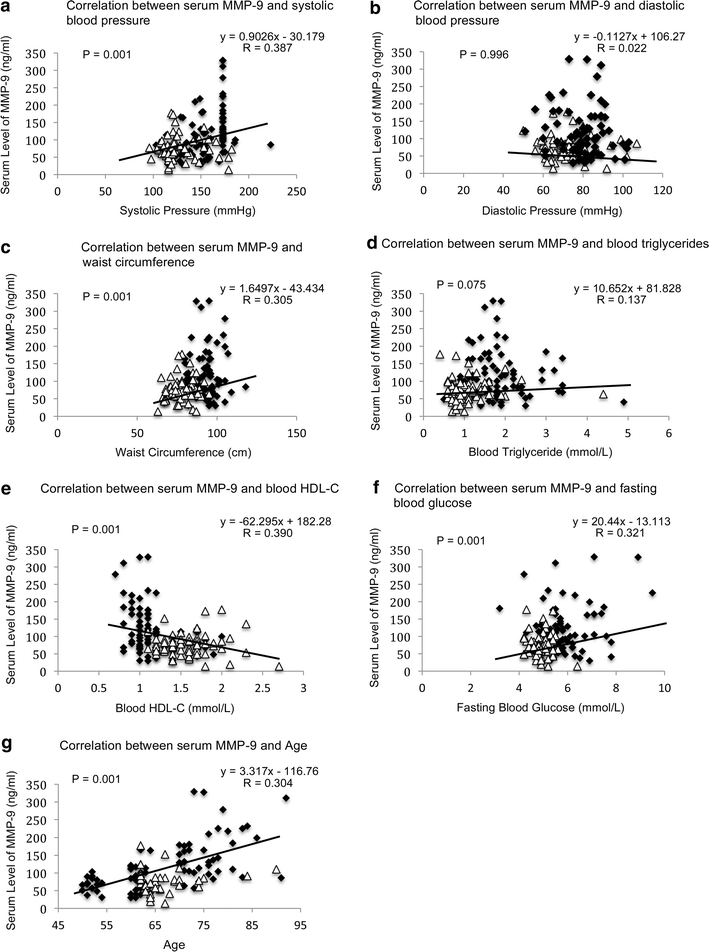
Similar articles
-
The Prevalence of Metabolic Syndrome and Its Association With Waist Circumference in Middle-Aged Individuals From Urban Mumbai.Cureus. 2024 Sep 18;16(9):e69669. doi: 10.7759/cureus.69669. eCollection 2024 Sep. Cureus. 2024. PMID: 39296924 Free PMC article.
-
Serum adiponectin and resistin: Correlation with metabolic syndrome and its associated criteria among temiar subtribe in Malaysia.Diabetes Metab Syndr. 2019 May-Jun;13(3):2015-2019. doi: 10.1016/j.dsx.2019.04.048. Epub 2019 Apr 25. Diabetes Metab Syndr. 2019. PMID: 31235129
-
Effects of 1-year yoga on cardiovascular risk factors in middle-aged and older adults with metabolic syndrome: a randomized trial.Diabetol Metab Syndr. 2015 Apr 30;7:40. doi: 10.1186/s13098-015-0034-3. eCollection 2015. Diabetol Metab Syndr. 2015. PMID: 26000038 Free PMC article.
-
Metabolic Syndrome.2019 Feb 11. In: Feingold KR, Ahmed SF, Anawalt B, Blackman MR, Boyce A, Chrousos G, Corpas E, de Herder WW, Dhatariya K, Dungan K, Hofland J, Kalra S, Kaltsas G, Kapoor N, Koch C, Kopp P, Korbonits M, Kovacs CS, Kuohung W, Laferrère B, Levy M, McGee EA, McLachlan R, Muzumdar R, Purnell J, Rey R, Sahay R, Shah AS, Singer F, Sperling MA, Stratakis CA, Trence DL, Wilson DP, editors. Endotext [Internet]. South Dartmouth (MA): MDText.com, Inc.; 2000–. 2019 Feb 11. In: Feingold KR, Ahmed SF, Anawalt B, Blackman MR, Boyce A, Chrousos G, Corpas E, de Herder WW, Dhatariya K, Dungan K, Hofland J, Kalra S, Kaltsas G, Kapoor N, Koch C, Kopp P, Korbonits M, Kovacs CS, Kuohung W, Laferrère B, Levy M, McGee EA, McLachlan R, Muzumdar R, Purnell J, Rey R, Sahay R, Shah AS, Singer F, Sperling MA, Stratakis CA, Trence DL, Wilson DP, editors. Endotext [Internet]. South Dartmouth (MA): MDText.com, Inc.; 2000–. PMID: 25905173 Free Books & Documents. Review.
-
Metabolic syndrome: The Indian public health perspective.Med J Armed Forces India. 2020 Jan;76(1):8-16. doi: 10.1016/j.mjafi.2019.12.001. Epub 2020 Jan 13. Med J Armed Forces India. 2020. PMID: 32020962 Free PMC article. Review.
Cited by
-
Ozone effects on blood biomarkers of systemic inflammation, oxidative stress, endothelial function, and thrombosis: The Multicenter Ozone Study in oldEr Subjects (MOSES).PLoS One. 2019 Sep 25;14(9):e0222601. doi: 10.1371/journal.pone.0222601. eCollection 2019. PLoS One. 2019. PMID: 31553765 Free PMC article. Clinical Trial.
-
Roles of Matrix Metalloproteinases and Their Natural Inhibitors in Metabolism: Insights into Health and Disease.Int J Mol Sci. 2023 Jun 26;24(13):10649. doi: 10.3390/ijms241310649. Int J Mol Sci. 2023. PMID: 37445827 Free PMC article. Review.
-
Association of Markers of Proinflammatory Phenotype and Beige Adipogenesis with Metabolic Syndrome in Chinese Centrally Obese Adults.J Diabetes Res. 2018 Feb 18;2018:8956509. doi: 10.1155/2018/8956509. eCollection 2018. J Diabetes Res. 2018. PMID: 29670915 Free PMC article.
-
Multicenter Ozone Study in oldEr Subjects (MOSES): Part 1. Effects of Exposure to Low Concentrations of Ozone on Respiratory and Cardiovascular Outcomes.Res Rep Health Eff Inst. 2017 Jun;2017(192, Pt 1):1-107. Res Rep Health Eff Inst. 2017. PMID: 31898880 Free PMC article.
-
Serum Matrix Metalloproteinase 9 and Macrophage Migration Inhibitory Factor (MIF) Are Increased in Young Healthy Nonobese Subjects with Positive Family History of Type 2 Diabetes.Int J Endocrinol. 2018 Sep 13;2018:3470412. doi: 10.1155/2018/3470412. eCollection 2018. Int J Endocrinol. 2018. PMID: 30302090 Free PMC article.
References
-
- Grundy SM, Cleeman JI, Daniels SR, Donato KA, Eckel RH, Franklin BA, et al. Diagnosis and management of the metabolic syndrome: an American Heart Association/National Heart, Lung, and Blood Institute Scientific Statement. Circulation. 2005;112(17):2735–2752. doi: 10.1161/CIRCULATIONAHA.105.169404. - DOI - PubMed
-
- Expert Panel on Detection E, Treatment of High Blood Cholesterol in A Executive Summary of The Third Report of The National Cholesterol Education Program (NCEP) expert panel on detection, evaluation, and treatment of high blood cholesterol in adults (Adult Treatment Panel III) JAMA. 2001;285(19):2486–2497. doi: 10.1001/jama.285.19.2486. - DOI - PubMed
-
- Alberti KG, Zimmet PZ. Definition, diagnosis and classification of diabetes mellitus and its complications. Part 1: diagnosis and classification of diabetes mellitus provisional report of a WHO consultation. Diab Med J Br Diab Assoc. 1998;15(7):539–553. doi: 10.1002/(SICI)1096-9136(199807)15:7<539::AID-DIA668>3.0.CO;2-S. - DOI - PubMed
LinkOut - more resources
Full Text Sources
Other Literature Sources
Miscellaneous

